Key takeaways:
- Selective mutism is an anxiety disorder that affects communication in specific social situations, often resulting in isolation rather than defiance.
- Creating awareness and understanding of selective mutism among family members can foster a supportive environment, enhancing connections during gatherings.
- Preparation for gatherings, such as discussing needs in advance and setting up calming spaces, can significantly ease anxiety for individuals with selective mutism.
- Utilizing strategies like visual aids, open-ended questions, and modeling calm communication can improve interactions and help manage anxiety in social settings.
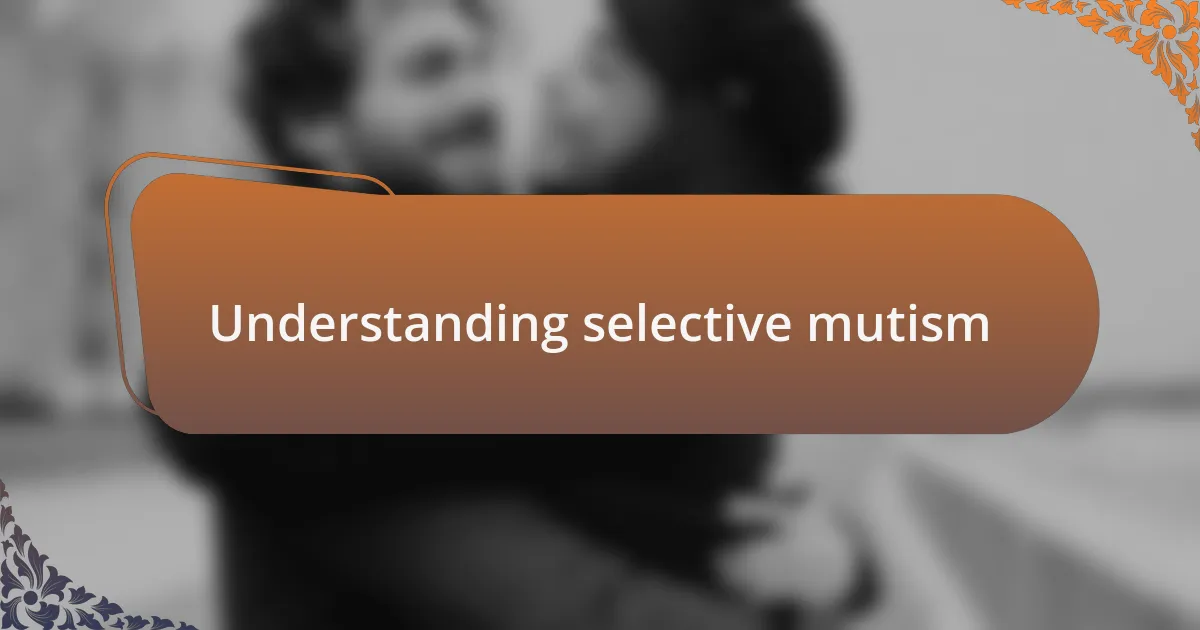
Understanding selective mutism
Selective mutism is more than simply being shy; it’s an anxiety disorder that affects a person’s ability to speak in specific social situations. I remember a family gathering where my child, typically talkative at home, suddenly clung to me and wouldn’t say a word. This stark contrast left me wondering, why is it so hard for them to speak in certain environments?
It’s important to recognize that the silence associated with selective mutism stems from overwhelming anxiety rather than defiance or rudeness. I often found myself grappling with frustration, feeling helpless as my child’s reluctance to engage left family members puzzled. Can you imagine being in a room full of loved ones but feeling completely isolated due to an inability to communicate?
Understanding this condition means acknowledging the deep emotions at play. For instance, the heart-wrenching disconnect I felt when trying to include my child in conversations was a profound reminder that each person’s experience with selective mutism is unique. How many parents face this invisible barrier, wishing they could bridge the gap and unlock their child’s voice in the crowded room?
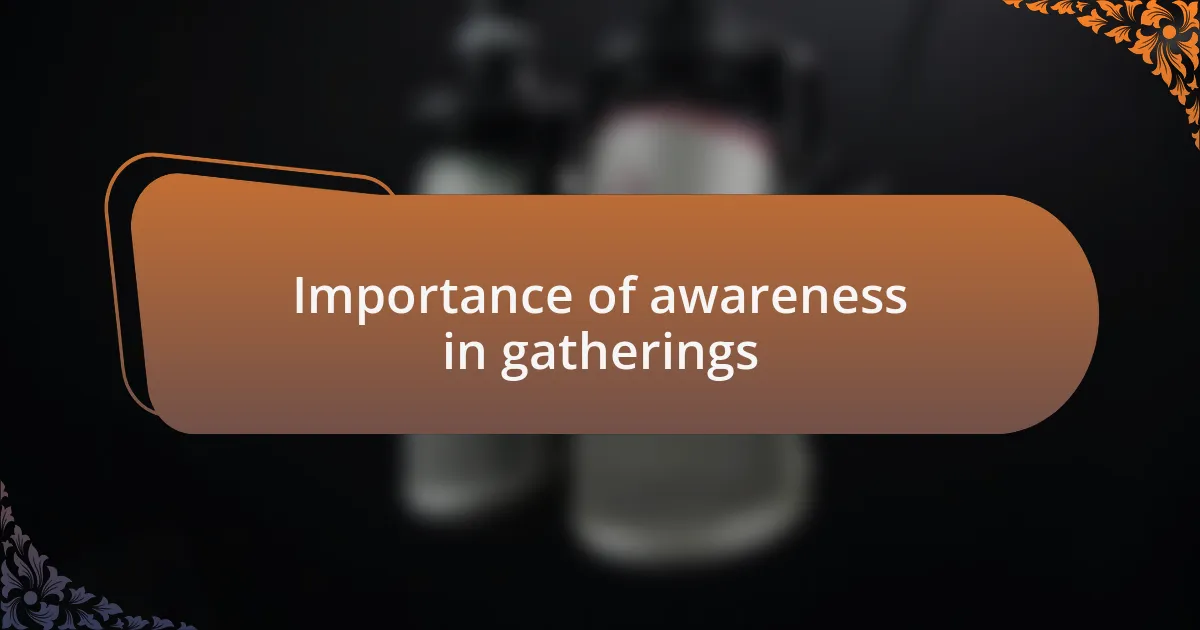
Importance of awareness in gatherings
Being aware of selective mutism during family gatherings can drastically change the dynamics. I remember one particular event where my relative, curious and well-meaning, kept asking my child questions. Sadly, without realizing it, they inadvertently intensified my child’s anxiety. Such moments highlight the need for awareness—understanding that not every silence is due to a lack of interest or unwillingness to interact.
When family members are informed about selective mutism, it encourages a supportive environment. I had a cousin who once took the time to quietly engage my child with simple, open-ended questions while allowing space for responses. That small gesture created a bridge, letting my child feel safe to express themselves. Can you imagine how empowering that was for both my child and me?
Awareness also fuels empathy, fostering patience among family members. I’ve seen how a simple reminder, like “Let’s give them some time,” can shift the atmosphere from one of discomfort to understanding. It’s crucial to recognize that our loved ones can champion these moments of connection, but they need to know how. What if we all took a moment to educate ourselves on selective mutism before gathering? The ripple effect of that awareness could transform family dynamics—and it starts with just a conversation.
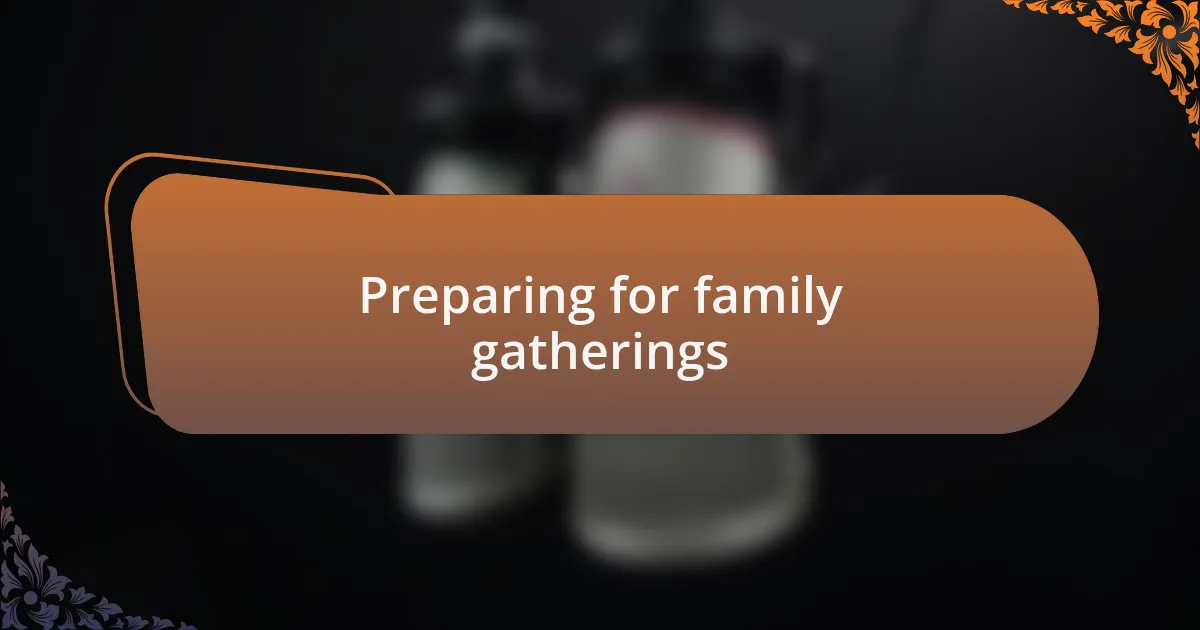
Preparing for family gatherings
Preparing for family gatherings requires forethought, especially when considering loved ones who experience selective mutism. I often jot down a few talking points or stories I know will resonate with my relatives, which gives me a sense of control. Isn’t it comforting to have a plan in mind when facing a gathering that might feel overwhelming?
In my experience, discussing my child’s needs with family ahead of time can set the stage for a successful gathering. I remember a time when I casually mentioned to my family that we might need a “quiet corner” for my child if things got too loud. The way they rallied around that idea—rearranging furniture to create a cozy space—filled me with gratitude. Wouldn’t it be wonderful if we all took proactive steps like these to make gatherings feel safe?
It can also help to prepare simple activities that require little verbal interaction, like drawing or building with blocks. I once brought along a craft kit to a family celebration, which became a peaceful refuge for my child. Watching them enjoy their creativity while family members joined in without pressure to communicate was a priceless moment. Have you ever noticed how shared activities can sometimes break down barriers more effectively than words?

Strategies for effective communication
When it comes to effective communication at family gatherings, I’ve found that using visual aids can be a game changer. For instance, I once created a simple picture board depicting key phrases and emotions for my child, which not only provided them with a way to express themselves but also helped family members connect with them in a meaningful way. Isn’t it fascinating how a few images can bridge the gap where words sometimes fail?
Another strategy that has resonated with me is fostering an inviting atmosphere for open-ended questions. At one gathering, I encouraged family members to ask my child about their favorite games or hobbies, which sparked a lively discussion. I could see the joy in my child’s eyes as they realized they could contribute without the pressure to speak. Doesn’t it make perfect sense to cultivate a space where everyone feels included and valued?
I’ve also discovered that modeling calm and patient communication can elevate everyone’s experience. During a particularly chaotic holiday dinner, I took a moment to speak softly and choose my words deliberately while engaging with my child. This not only helped to ease their anxiety but also encouraged other family members to adopt a gentler tone. Have you ever noticed how our own emotional state can influence those around us?

Managing anxiety in social settings
Managing anxiety in social settings can be a real challenge, especially for those who struggle with selective mutism. I remember attending a family gathering where my child felt overwhelmed by the noise and unfamiliar faces. I took their hand and led them to a quieter corner, where we could observe the festivities from a distance. Isn’t it amazing how sometimes a simple change of scenery can soothe anxious feelings?
Another approach that has worked wonders is preparing my child for social interactions ahead of time. Before one event, I practiced breathing exercises with them, explaining how deep breaths could help calm their racing hearts. When the gathering began, I noticed my child using those techniques to manage their anxiety. Have you ever felt a sense of empowerment from having a strategy in your back pocket?
Lastly, I’ve found that discussing feelings openly helps create a supportive environment. At one family dinner, I took a moment to share how everyone can experience nerves in situations like these. It was heartwarming to see relatives offer encouragement and share their own stories of anxiety. Doesn’t it feel good to break down walls and foster understanding among loved ones?
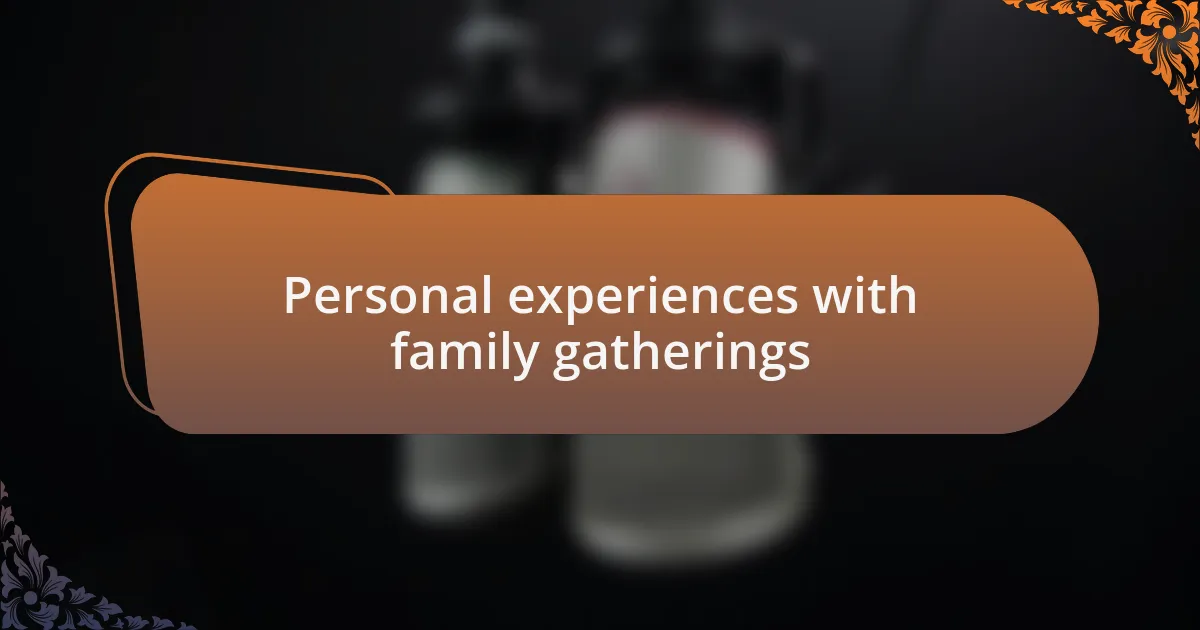
Personal experiences with family gatherings
I still remember the family reunion where laughter and chatter filled the air, yet my heart raced as I noticed my child retreating into their shell. I felt a mix of pride and concern as I saw them hide behind my leg. Ultimately, I squatted down and whispered reassuring words. Have you ever been so aware of your surroundings that you felt responsible for maintaining the peace?
During another gathering, I decided to create a scavenger hunt for my child, hoping it would divert their attention from the overwhelming social atmosphere. Watching them run off eagerly, their anxiety momentarily replaced by excitement, was incredibly rewarding. I couldn’t help but wonder: shouldn’t every family member play a role in making each other feel safe and included?
At a smaller family gathering, I introduced a “safe word” for my child to use when they felt uncomfortable. When they first said it, I immediately knelt beside them, offering a comforting embrace before taking them outside for some fresh air. It reinforced my belief that having a plan fosters a sense of control. How often do we overlook the little tools that can empower our loved ones in social situations?
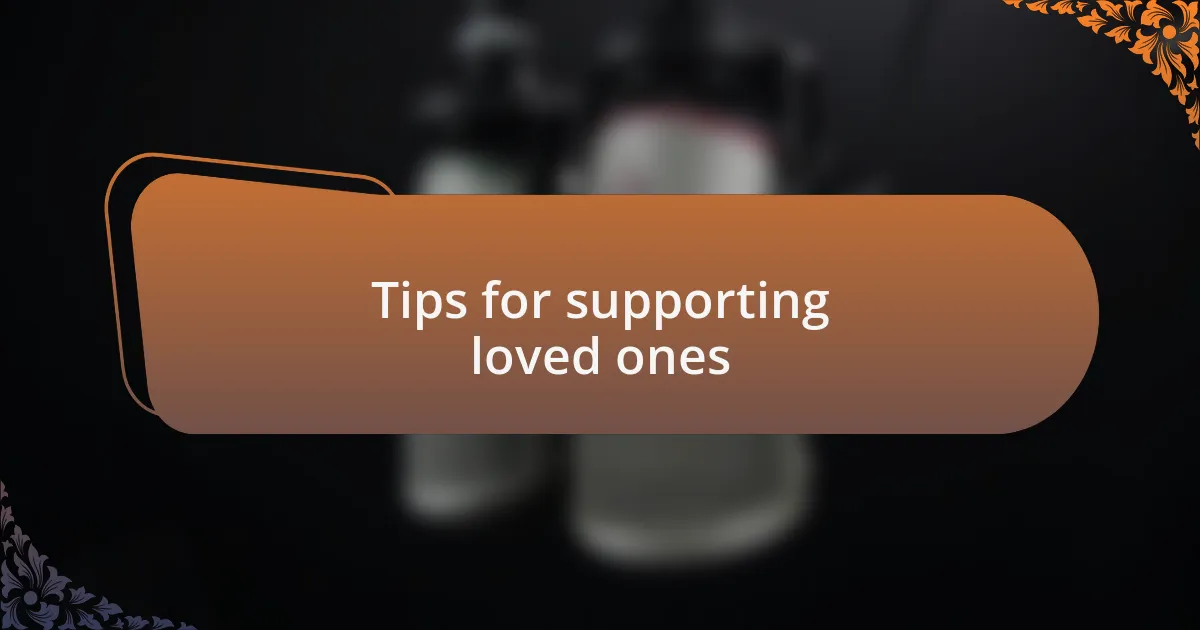
Tips for supporting loved ones
It can be incredibly helpful to create a calm environment before family gatherings. For example, I’ve found that setting aside some quiet time with my child before heading into a bustling crowd works wonders. It gives them the chance to express any concerns, and it reminds me to validate their feelings. Isn’t it amazing how a little preparation can make such a difference?
When a family member notices my child struggling, I appreciate it when they step in with gentle encouragement. I recall an occasion when my sibling approached my child with a favorite toy, easing their transition into the family dynamics. That simple act of recognition not only supported my child but also strengthened our bond as a family. How empowering it is when we all play a part in lifting each other up!
I often find that reminding family members about my child’s preferences can help ensure their comfort. During a recent gathering, I mentioned how my child enjoys coloring when feeling overwhelmed. Sure enough, a family member set up a cozy corner with coloring books, creating a nurturing space that allowed my child to feel more at ease. It’s these small yet deliberate actions that can help transform a daunting experience into a more enjoyable one. Have you thought about ways to customize gatherings to better support your loved ones?